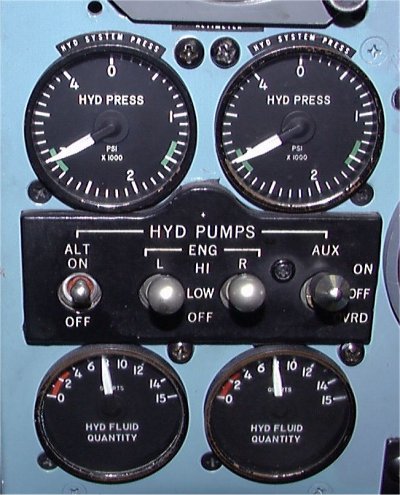HYDRAULIC PANEL and PUMPS.
Each system is equipped with a hydraulic fluid reservoir and an engine-driven pump which normally provides system pressure. An electrically driven auxiliary pump is installed in the right system as a backup of the right engine-driven pump. The two hydraulic systems are mechanically interconnected by the alternate pump. The pump consists of two coupled hydraulic units so constructed that either unit can operate as a motor while the other operates as a pump. The alternate pump thus serves as a pressure backup for both systems as it may operate as a pump for one system driven by the motor from the other.
Each hydraulic system is divided into two sections by the priority valves.
By these valves the subsystems which are not used during cruise, when the
engine driven pumps are operated in low pressure mode, are isolated from the
rest of the hydraulic power system.
The following system will not work with the pumps in low (1500psi). |